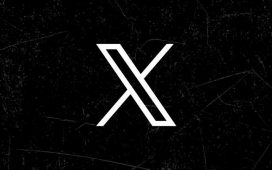By Nagham Akileh, senior director of e-commerce strategy, OMG Transact

Last Ramadan was unlike any other; the social gatherings we are used to – from sharing meals to nightly prayers – were met with restriction of movement or full lockdowns. This affected many brands during one of the most important events of the year and, despite what many hoped would be a one-time occurrence, here we are a year later preparing ourselves for another socially distanced Ramadan. Not everything is the same, though; we are equipped with experience and have a sense of intuitiveness when it comes to navigating unconventional ways to celebrate special occasions. This year can be an opportunity for brands if they prepare for one of the biggest seasons of the year with the new normal in mind.
Here are some considerations when planning for Ramadan in 2021:
Launch your Ramadan campaign in March
In 2020, online sales started increasing 10 days before Ramadan and continued to increase by 47 per cent halfway through the Holy Month. As people begin to prepare for Ramadan, e-grocery is likely to see a similar surge in online shopping this year as well. People are not only on the lookout for offers but generally tend to be open to cross-category buying.
Ensure e-commerce is integrated within your brand campaigns. Let your existing and potential customers know where they can find you online.
The takeaway: Brands stand to gain new customers by launching before Ramadan. It will also give them the opportunity to gain early learnings and optimise before Ramadan starts, placing them in a better position than the competition. Brands should also ensure e-commerce destinations are clear in media communication and visuals, including TV and video ads.
Prepare for the traffic surge
We are living in a physically distanced economy; MENA consumers are spending even more time online compared with before the outbreak of the pandemic. Zoom users in the UAE increased by 900 per cent during the start of the pandemic, and last Ramadan MENA users spent over 50 per cent of their time consuming online entertainment. During Ramadan, this behaviour will shift into the later hours of the night, namely between 12 am and 4 am. Users will not only be consuming content but shopping online, and most likely for long-tail items. This is a great window of opportunity for brands to engage consumers around their products and encourage people to consider and buy.
However, a surge in site traffic can often be a missed opportunity if the user experience is poor and site servers are not able to handle the additional traffic. It is also a chance to ensure all the right tags and tech stack integrations are in place to maximise the retargeting experience towards customers. The last thing a converted customer wants to see is an ad for an item they just purchased.
The takeaway: Brands should align their media targeting and pacing with Ramadan-specific shifts. Fashion, electronics, and home and garden categories stand to benefit the most from long-tail shopping behaviours. Brands with direct-to-consumer (DTC) storefronts need to ensure their sites are optimised for conversions and can handle additional traffic.
Leverage social commerce
Globally, 21 per cent of those on social media, and 41 per cent of those who have no channel preference, are in favour of a social-commerce customer experience. These numbers will continue to grow as social platforms further develop social commerce features and brands adopt them. For digital commerce to remain relevant, using content as a two-way interaction between brands and shoppers is essential.
The takeaway: Brands should go beyond performance marketing on social channels and vertically integrate by leveraging commerce features with content to captivate engagement across the consumer journey.
Plan for the worst-case scenario
2020 revealed the weakest link for online retail: the supply chain. With lockdowns, brands heavily reliant on imports went out of stock, retail verticals deemed ‘non-essential’ were limited in how they can sell, and on the back of that we saw many ad-hoc solutions come into play. We are still seeing the rules constantly change in 2021, with varying degrees of restrictions. The worst-case scenario is a lockdown, so the question every brand should be asking themselves is: “How is our online business equipped to handle another lockdown?”
The takeaway: Direct-to-consumer (DTC) brands and those selling on niche or vertical marketplaces should consider setting up storefronts with larger players in the market like Amazon or Noon ahead of time. Brands should also have a contingency plan to active media using on-site advertising in the event of a lockdown, as they have the necessary clout and infrastructure and are likely to remain unaffected in this scenario.









